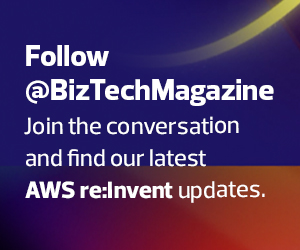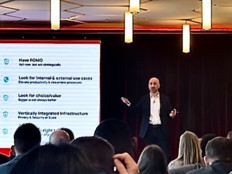AWS Provides Cloud Security for Its Users’ Data
Consumers are particularly concerned about the security of their financial data, and AWS works with financial organizations to ensure the observability, security and resilience of the data they acquire. “It’s almost impossible to comprehend how much data there is. But just as remarkable is how fast it’s growing,” Selipsky said. “Analysts predict that in the next five years, we’re going to create more than double the amount of data produced since the dawn of the digital age. Managing the scale and the growth of that data is supposed to be a huge challenge and an opportunity for every organization.”
Selipsky cited the Options Clearing Corp. “The OCC serves as the central clearing warehouse for all listed equity options traded in the United States. It’s part of the central nervous system of the financial markets,” he said, noting that the organization is currently moving its mission-critical operations to the cloud.
“Working with data is tricky. Just as the vastness and complexity of space means you can’t explore it with just one technology, the same is true for data,” Selipsky explained. “You need a complete set of tools that accounts for the scale and the variety of the data and the many purposes for which you want to use it.”
Data needs to be integrated even when it’s spread across many locations to allow for more accurate understanding and predictions. “You need governance so that your teams can explore and innovate while always making sure that your data is safe and secure,” he said. “And you need to be able to visualize data in a way that makes it fast and easy to discover and share insights. You need to do all of these things to explore the vast complexity of your data and to generate insights for your business.”
DISCOVER: Learn how cloud security posture management is keeping financial data safe in the cloud.
What Is a Clean Room, and How Can It Make Data More Secure?
One common problem facing financial services is collaborating on shared data sets while still protecting the underlying raw data. Selipsky noted, “Data clean rooms — protected environments where multiple parties can analyze combined data without ever exposing the broad data — have emerged as a solution.”
He said clean rooms can be hard to build and take months to develop. “Once you’ve built a clean room, you have to continuously update the data, all the while meeting requests for new collaborators and data types.”
During the keynote, Selipsky announced AWS Clean Rooms, describing it as “a new service that helps companies and their business partners to securely analyze and collaborate on data sets without sharing or revealing the underlying data.”
“By analyzing your combined data sets, you can generate insights to improve your understanding of your own customers, and AWS Clean Rooms includes cryptographic computing tools that let you keep your data encrypted even as queries are processed,” he said.
Click the banner below to get the latest industry trends from the influencers who set them.














